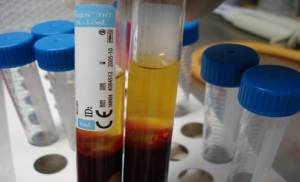“Times They Are A Changing”-Bob Dylan
From the Rush Web Site
Platelet-Rich Plasma Clinical Trial at Rush
Can Platelet-Rich Plasma Ease the Pain of Osteoarthritis?
CHICAGO—For years, doctors have used platelet-rich plasma, or PRP, to promote healing after surgery. Now, Rush University Medical Center is studying whether PRP can help relieve knee pain in patients with mild to moderate osteoarthritis. PRP contains growth factors that promote cell proliferation and is prepared from the patient’s own blood tissue. It has received popular attention because of its use in treating sports injuries in professional athletes, but the jury is still out on whether it is effective.
The therapy will not be a cure for osteoarthritis, but it could help put off the day when a patient will need to get a knee implant. At present, the standard of care is either corticosteroid injections, which may last about three months, or synthetic lubricants containing hyaluronic acid, which can last for up to a year.
In the double-blind, randomized, controlled study, 100 patients will receive either hyaluronic acid or PRP. The PRP is prepared from 10 millimeters of the patient’s own blood. The blood is spun in a centrifuge to separate the platelets from the red and white blood cells. The platelets are then injected into the knee joint using ultrasound imaging to guide placement.
Patients will receive three injections over three weeks, and will be monitored for two years receiving a clinical exam to assess pain and knee function. In addition, a teaspoon-size sample will be taken of the synovial fluid around the knee joint to test for molecular changes that may indicate a shift in the balance of anabolic factors that increase the buildup of tissue and catabolic factors that break it down. An imbalance in these factors has been implicated in the deterioration that leads to osteoarthritis.”
I last wrote about PRP on February 22, 2011. Last week, I referred several patients for the Rush study but they didn’t qualify because of age requirements (<55). My patients then told me they were informed that they could receive PRP outside of the study on a fee for service basis. Platelet Rich Plasma alternatives to a joint replacement? Coming from a major academic medical center and a world-renowned orthopedic practice in whose founding and development I played a major role, it is time for me to extend the potential benefit of PRP to my patient as I adopt an increasing proactive role in the world of rejuvantive cellular management for arthritis. To schedule an appointment or to learn more about PRP, call 312 475 1893 and speak to Jennifer Kelly
